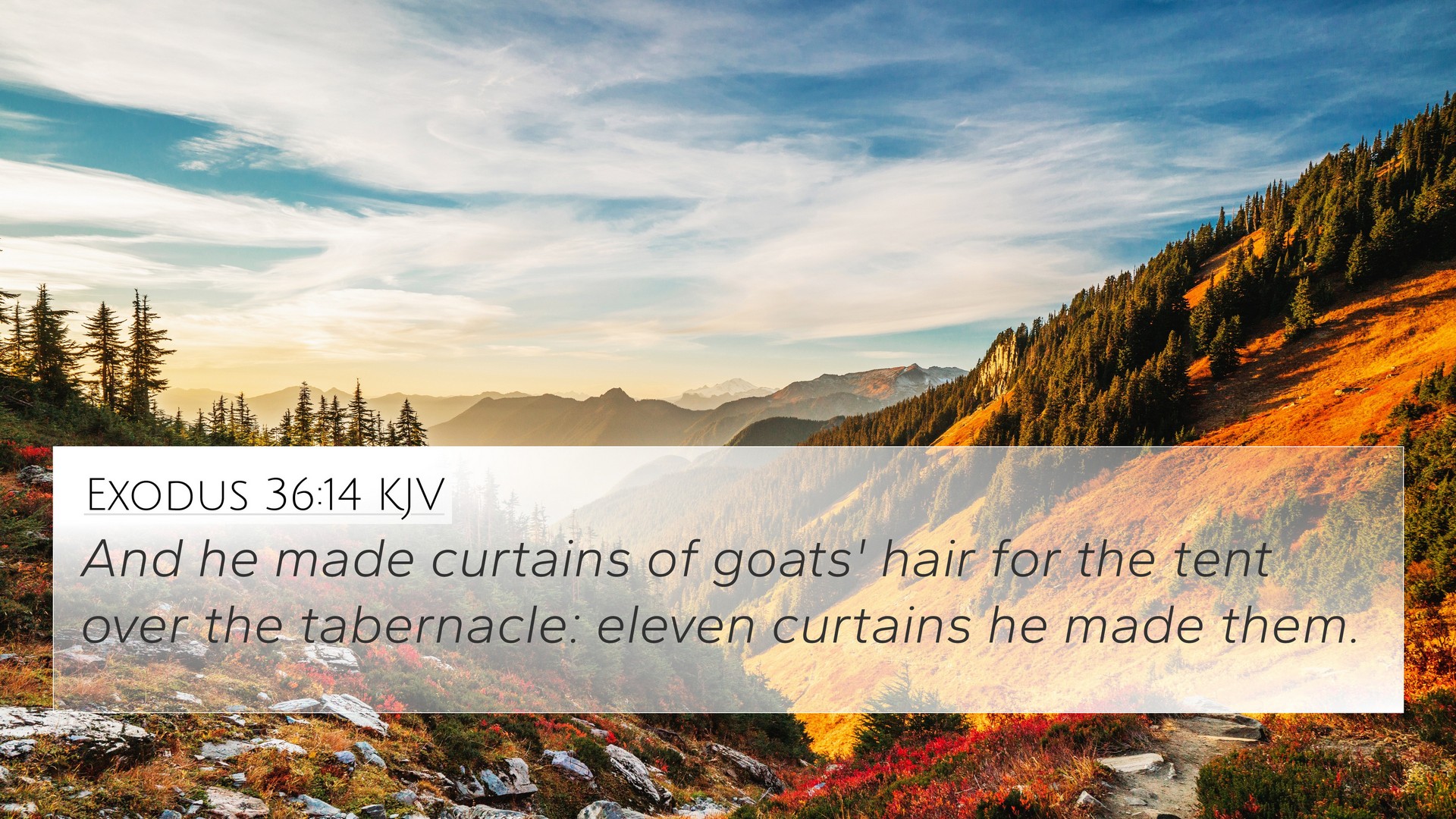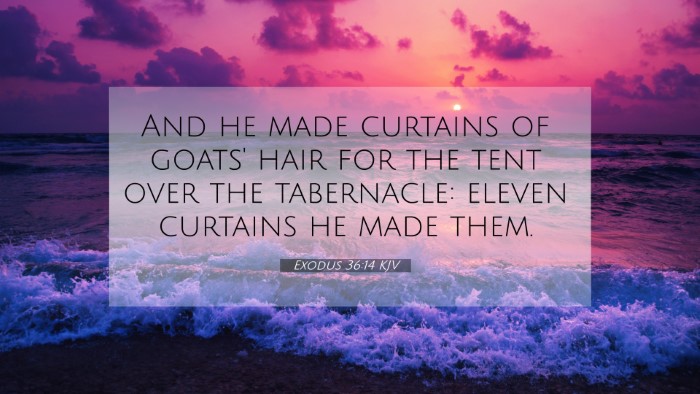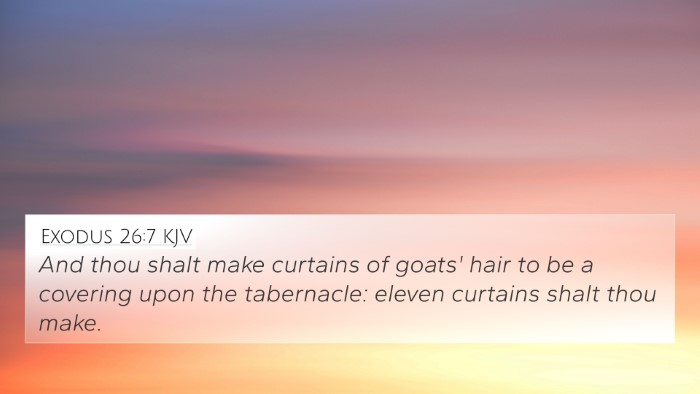Understanding Exodus 36:14 - A Summary of Biblical Interpretations
Exodus 36:14 states: "And he made curtains of goats' hair for the tent over the tabernacle: eleven curtains he made." This verse refers to the construction of the Tabernacle, focusing on the materials and craftsmanship used in its making. The significance of this verse not only highlights the meticulousness required in worship but also reflects deeper theological truths regarding God's dwelling among His people.
Commentary Insights
The commentaries of noted scholars such as Matthew Henry, Albert Barnes, and Adam Clarke provide a rich tapestry of meanings associated with this verse.
- Matthew Henry: Henry emphasizes the significance of the materials used, noting that goats' hair symbolized humility and the need for protection. The Tabernacle's fabric denoted the covering of sins and the concealment of divine mysteries.
- Albert Barnes: Barnes draws attention to the careful craftsmanship involved. He suggests that the meticulous creation of the curtains illustrates how important it is to God that His dwelling place is made with excellence, reflecting respect and reverence for divine worship.
- Adam Clarke: Clarke points out that the use of goats' hair indicates God's provision for shelter and protection, as the Tabernacle served as a movable place of worship and encounter with the Lord. He connects this to the idea of God providing for His people's spiritual needs.
Thematic Connections
This verse is a part of a larger narrative that reflects on themes of divine presence and holiness. Here are some biblical themes that resonate with Exodus 36:14:
- God's Dwelling: The construction of the Tabernacle illustrates the desire of God to dwell among His people, as reiterated in Exodus 25:8
- God's Instructions: This verse fits within the framework of divine instruction, seen throughout the book of Exodus, exemplifying the importance of obedience to God's commandments (see Exodus 25:40).
- Provision and Protection: The materials used in crafting the Tabernacle symbolizes God's provision, much like the manner in which He provided for the Israelites in the wilderness as discussed in Deuteronomy 8:4.
- Symbolism of Fabrics: Goats' hair and other materials signify the diverse attributes of worship and humility, akin to themes explored in Psalms 104:18.
- The Nature of Worship: This act of construction represents the reverential approach required in worship, which is articulated in 1 Chronicles 16:29.
- God's Holiness: The Tabernacle's design and materials emphasize the holiness of God and His requirement for purity among His people (reference to Leviticus 11:44).
- Transcendence and Immanence: The intricate details of the Tabernacle show God's transcendence, while simultaneously allowing for His immanence among His people (as seen in Matthew 1:23 regarding Jesus, Emmanuel).
Cross-References Related to Exodus 36:14
This verse can be cross-referenced with several other scriptures, enhancing understanding through inter-biblical dialogues:
- Hebrews 9:2: Refers to the construction of the Tabernacle and its meaning in relation to the New Covenant.
- Acts 7:44: Mentions the Tabernacle as a dwelling place for God during the Exodus.
- 1 Corinthians 3:16: Discusses believers as the temple of God, aligning with the theme of divine dwelling.
- 2 Timothy 2:20-21: Compares the vessel's sanctity to the materials used in the Tabernacle.
- Revelation 21:3: Speaks of God dwelling among humanity, similar to the notion of the Tabernacle.
- John 1:14: Connects to the idea of God dwelling among men through Christ.
- Exodus 26:1: Details the curtains of the Tabernacle, providing further context to Exodus 36:14.
Conclusion
Understanding Exodus 36:14 involves exploring its rich historical connotations, the significance of the materials and craftsmanship involved, and its broader theological themes. The Tabernacle stands as a representation of God's desire for relationship with humanity, encapsulating the essence of worship and divine presence. By examining related scripture references, we find a cohesive narrative that ties the Old Testament with the New, providing a fuller understanding of God's redemptive plan through history.
This comprehensive cross-referencing enables readers to appreciate the intricate connections woven throughout the Scriptures, demonstrating how various Biblical texts converse with one another. Understanding these correlations aids in deepening one's study and fostering a more profound relationship with the Word of God.



